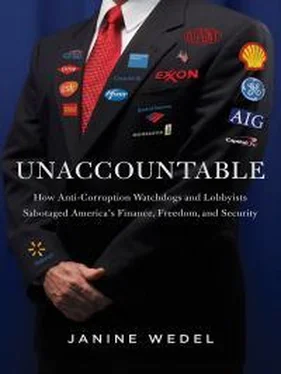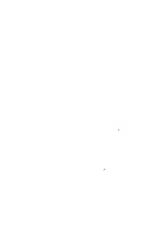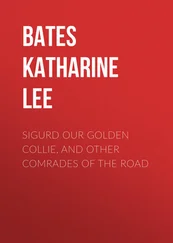Economic models also focused on the individual, not the network, as the crux of the problem. The individual bureaucrat taking bribes was the guilty party. But what about the informal networks and groups that underwrote so much corruption across state and private venues? The emerging players of the new corruption who specialize in crossing boundaries—state and private, national, international—were not even a blip on the radar screen. Once again, the unaccountable won.
The Principal and the Agent
The problem is not only that the High-Priest economists were blinded by their own religion: the problem is also that they spent so much time with their own scriptures (read: economic models and econometrics) that many were barely familiar with the contexts in which they were intervening. They assumed all gardens to be the same and garden-variety bribery to be the key problem. Stunningly, their theoretical favorite, the principal-agent model, was often inaccurate when applied even to bribery—much like applying the theory of bacterial infections to treating a virus.
You will recall that the principal-agent theory, with the bureaucrat (agent) incentivized (or not) to do the job the government (principal) needs doing, assumes that the principal is an honest broker and that the only potential problem is ensuring the agent’s reliability. But is that always, or even often, the case? 71In an earlier era, were the principals—the governments of Mobutu, Marcos, Selassie, and Ul-Haq—honest brokers, needing only to make sure that government bureaucrats (the agents) did not take bribes?
The principal-agent theory is even less suited to make sense of the practitioners of the new corruption. It can only deal with “need,” not “greed,” corruption, which lacks clear principals. 72It implies discrete acts, between two parties, with defined benefits (say, a corrupt lawmaker takes a bribe from a company in exchange for a favorable vote). Yet an influencer like former Senator Tom Daschle, who we discussed in Chapter 3, surely doesn’t take bribes. But he has advised the president while working for companies that stand to benefit from the decisions made by the president. The principal-agent framework breaks down even more when one considers that relationships are multiple and moving, and organizational missions are blurred. Highfliers like Tony Blair or Bill Clinton, to use other examples, operate in perhaps a dozen different venues of influence during the same time frame. The fact that they have so many roles makes it impossible to determine at any time who is the principal and who is the agent. Although they have not been shown to be corrupt, their modus operandi makes transparency and accountability close to impossible.
In short, the principal-agent framework is seductive because of its clarity. But in the face of much, if not most, corruption—even that which is defined as bribery—its usefulness is limited.
Seducing with Numbers
Another core approach of the economists is that corruption is conducive to analysis through metrics and country-ranking schemes. A single score, the story lines imply, conveys the corruption of an entire country. Ordering countries by rank tells us how one compares to another. Yet like the VaR metric that we heard about earlier, such single numbers are seductive—and can be dangerously misleading.
Consider the following: in 2008, the United States had a corruption score on the Corruption Perceptions Index of 7.3 on a scale of 10, with 10 signifying clean government. 73In 2009, its score improved slightly, to 7.5. In 2008 and 2009, the United States ranked 18 (tying with Japan and Belgium) and 19, respectively, out of 180 countries included in the measurement. 74At the same time that America looked so respectable, some of its signature players were engaging in massive mortgage fraud, and Goldman Sachs was betting unknowing clients against others, setting up some to fail, in schemes that would help tank not only the U.S. economy but that of much of the world. 75
Iceland, the economic devastation of which we discussed in Chapter 3, routinely ranked even cleaner than the United States. That nation scored 8.9 and 8.7 in 2008 and 2009, respectively, and ranked among the least corrupt countries with an overall rank of 8 out of 180 in 2009. 76At the same time that TI’s index showed that Iceland was practically corruption-free, its “Locomotives,” devoted as they were to unfettered privatization and deregulation, were wreaking economic havoc. Iceland, which for years was controlled by a “ruling class, so small, so tightly bound by obligations, by blood and money” (as journalist Roger Boyes, who wrote a book on the subject, chronicles), routinely ranked very high despite the actions of those inbred elites that caused the country’s economy to crater. 77
In the same vein, Ireland, its scores and rankings between those of Iceland and the United States, improved its score from 7.7 in 2008 to 8 in 2009, despite a massive real estate and banking collapse. 78
How can there be such a disconnect between these rankings and reality? Between the so-called experts’ understanding of corruption, and that of so many people who, more and more, view corruption as violating their trust?
Let’s look at what, exactly, these schemes consist of. While the Corruption Perceptions Index is often taken as an indicator of actual corruption, it does not claim to be that. Economist Lambsdorff, who developed the CPI, describes it as “a composite index based on a variety of different elite business surveys and expert panels.” 79This “poll of polls,” as TI’s 1997 annual report clarifies, is “an attempt to assess the level at which corruption is perceived by people working for multinational firms and institutions as impacting on commercial and social life” [emphasis added]. 80
Be that as it may, the CPI promises an accurate global view of corruption, at least to many—if not most—of its consumers. Such indices are assumed to transmit fact. 81But these “facts”—that is, the numbers—are sometimes thrown together in an analytic jumble: tools that “measure very different things, despite having similar-sounding titles.” 82Hatched by corruption-index-happy economists and the like, the CPI conflates disparate sectors and processes to create one showcase number. Political scientist Ivan Krastev, who observed the anti-corruption industry on the ground in Bulgaria, blows apart the efficacy of such indices: 83
What do we claim when we assert that [a] certain regime or certain period is more corrupt than [an]other? Do we claim that during this period the number of corrupt transactions has increased? Do we claim that the number of people involved in corrupt transactions has increased? Do we claim that corruption has reached the highest places of power? Do we claim that the social costs of corruption have increased? Do we claim that society as a whole is more tolerant to corruption, or do we claim these together?
Delving deeper, we should ask: What do we mean by corruption, and what are we measuring? The activities of a sector? Bureaucrats more generally? Elites? Black markets? Attitudes? Levels of trust?
Then there is the pesky issue of context. Indices are entirely stripped of it. The study of corruption is “portrayed as similar to the study of inflation,” as Krastev writes. 84Numbers are made to stand stark naked, on their own, and do things for which they are ill fit.
The emperor, too, has no clothes, because corruption is not like inflation. Inflation indices measure the value of a basket of goods during one short period. By contrast, corruption indices are charged with capturing the dynamics of an enormously diverse collection of people, motives, contexts, and systems in societies that often are dimly understood by the economists who devise the indices (and who nonetheless set up programs to change incentives). Yet it is stories (told by participants, observers, and their confreres) about corruption that convey the context in which it is embedded; that show us what it is and how it works in a given setting; and how it fits into the political, economic, and social web.
Читать дальше












